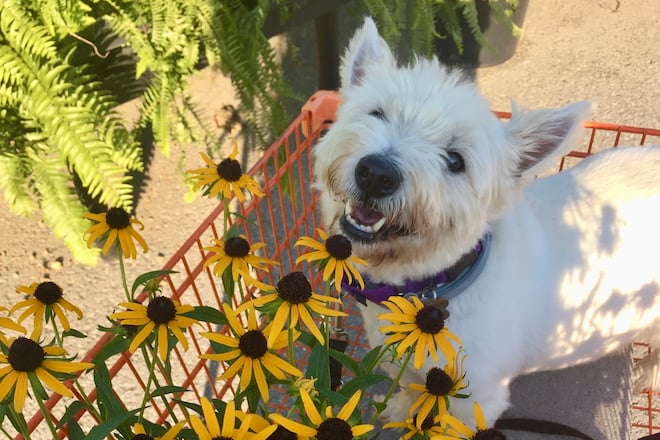This Week: Shopping for Native Plants
Hello!
This is a long one today, so scroll down for a link to a page that will track native plants found at my local Lowe’s and Home Depot this summer, and a reminder that Blooms to Bees will be at Mt. Lebanon’s Earth Day celebration this weekend! On with the show.
’Tis the season for prowling the garden center aisles looking for plants that improve our outside spaces! But where does one shop for native plants? Depending on where you live, the answer varies.
Local Plant Sales
First, there are non-profit and community sales. In Pennsylvania, the Penn State Extension Master Gardeners and Watershed Stewards host plant sales that include natives or are entirely native. Other local groups, like nature conservancies and plant societies, and organizations like the Audubon Society also host sales. Some local garden groups have plant swaps. Find these folks on social media and get on their email lists, because this kind of native plant shopping is under the radar until you seek it out.
Native Plant Nurseries
Another option is to buy from native plant nurseries. These may be local small businesses that pot plugs and source trees and shrubs from larger growers, those who start plants from seed on their farms and in greenhouses, or the backyard grower selling at a farmer’s market. They can also be larger online sellers (Izel and Prairie Moon, for instance). Yet again, these marketplaces are typically more easily found by someone who already knows they want to plant native, and less so by those with a general landscaping desire.
Local Nurseries and Big Box Garden Centers
And lastly, the places where most people shop for plants: local nurseries and big box garden centers. Here, you can buy trees, shrubs, and perennials in various pot sizes and price points (which boils down to plant maturity and years of nursery care). You can find natives here, but not every plant will be native, and even among the natives, many are cultivars bred for characteristics desirable to humans (size, bloom time, color, etc.) rather than beneficial insects and wildlife (though often we both like them). What’s the problem with shopping here? Unless a special section is set aside for natives, you are responsible for figuring out what is native by finding a knowledgeable salesperson, Googling on the spot, or taking notes and doing homework.

Why Some People Don’t Plant Natives
When I started my garden, I didn’t know about natives, so I bought Big Leaf Hydrangeas, Leatherleaf Viburnum, Daylilies, Salvia, Russian Sage, and a few accidental natives: Purple Coneflowers and Black-Eyed Susans. Some were purchased at a local nursery, and I picked up others at a big box store. As my passion for gardening grew, I learned more about natives. So, I expanded my garden to include them, and over time, pushed out many of the non-natives (though my love for Leatherleaf Viburnum lives on). But imagine if, when I started landscaping areas around my home, I could purchase a mostly native landscape inadvertently, no matter where I shopped. What if I didn’t have to do homework or start a gardening hobby first?
Today, there are barriers to native gardening. You need time to seek out knowledge and do the legwork to find plants outside your usual shopping spots, money to take classes or hire someone like me to help, and life circumstances that allow you to pursue a hobby. That’s a lot to ask of someone who plans to rip out some overgrown Yews or dead Boxwoods and replace them with something new this weekend!
Tracking What’s Available at Big Box Sellers
That’s why, for the past few summers, I’ve trolled my local Lowe’s and Home Depot to find out what native plants they are selling, and I update this page on bloomstobees.com with my findings. They sell an astronomical amount of plants throughout the U.S., and I’m interested in seeing if these large chains are doing anything to switch the default setting on landscape plants from non-natives to natives. Plus, I think it’s handy for Blooms to Bees readers to see what they can find at big box stores, given their ubiquity.
Over the past few years, Lowe’s went from not selling any native grasses to selling Little Bluestem and Switchgrass cultivars, and even some straight species of Witchhazel. This is encouraging because many more people will accidentally plant natives in their yards, and effortlessly (and unwittingly) improve our environment. Wouldn’t it be wonderful if the right choice for the Earth were the easiest to make?
Elsewhere:
A reminder that Blooms to Bees will be at Mt. Lebanon’s Main Park on Sunday, April 27, from 11 am to 3 pm as part of their Earth Day celebration. Blooms to Bees will offer freebies like native seed packets, Homegrown National Park bookmarks, and garden advice. I’ll also have garden journals, garden calendars, and guides for sale. Please stop by and let me know you’re a newsletter reader!
Have a great week,
Julie